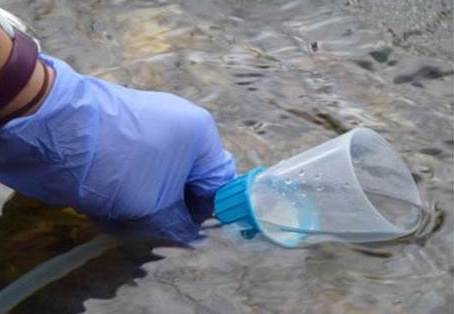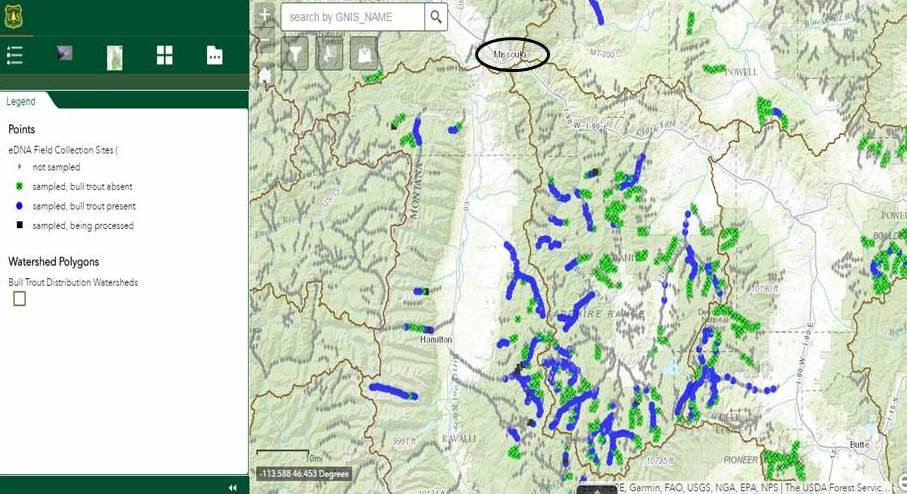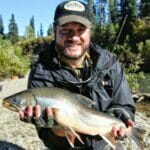Handlng fish is no longer required to prove they exist in a river system. Joshua Duplechian/Trout Unlimited
By Helen Neville
Documenting the presence of a particular species of fish usually requires physical contact with it, via electrofishing, netting, or even angling. We know the fish is there because we saw it and handled it. But what if there was a way to detect a species simply by collecting a water sample?
Now, sampling for environmental DNA (eDNA) allows us to do just that, without the need to capture or handle the critter of interest.
The concept is simple: biological material in the form of scales, mucous, or feces is continually shed by aquatic organisms and suspended in the water column, and can be captured and concentrated as water is washed across a filter. DNA isolated from this material can be evaluated in the lab to detect the presence or absence of one or more species of interest with high accuracy.

Will this water sample provide a clue on the presence of bull trout in the river? National Geonomics Center for Wildlife and Fish Conservation photo.
Environmental DNA shows promise in evaluating common conservation actions undertaken by various Trout Unlimited programs, such as verifying that a species of interest is now using habitat that has been recently connected or restored, or confirming the presence or absence of undesirable non-native species before or after eradication efforts.
It can also be used to refine our basic understanding of trout distributions, especially for rare species, which can be particularly difficult to detect with other methods. Because eDNA is less equipment-intensive than traditional fish sampling methods, it can be used to document a species’ distribution over a much larger area, faster, and with fewer people.
So scientists at the USFS Rocky Mountain Research Station realized eDNA is the perfect tool for determining the distribution and status of the threatened bull trout, which occurs in some of the most inaccessible parts of the northwestern U.S. Several years ago they enlisted a battalion of partners, including Trout Unlimited, to collect water samples according to a designed sampling strategy.
The most recent results from their Rangewide Bull Trout eDNA Project have just been posted, and provide open access to data from more than 3,000 sites across five western states. Not only do these results improve resolution of the known distribution of bull trout, but the work has also uncovered new bull trout populations in several areas including the Bitterroot Basin in Montana and in tributaries to the Wenatchee River in Washington.

Results from the RMRS Rangewide Bull Trout eDNA project showing bull trout presence (blue dots) and absence (green crossed dots) in targeted waters south of Missoula, MT (black circle).
Bull trout data will continue to be updated as more eDNA samples come in, and the group is also expanding their effort across the entire western U.S. and Alaska in an Aquatic eDNAtlas that will capture presence/absence for all aquatic species.
In the near future, all of this crowd-sourced information – expected to include more than 10,000 samples – will be available for use by us all. TU Angler Science at work with more opportunities on the way!
You can read more about the project and access the bull trout results here and see the status of the Bull Trout survey, including an online map here.
Helen Neville is the director of research and science Partnerships for Trout Unlimited. She can be reach at hneville@tu.org



